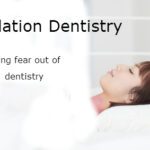Dental Sedation and General Anesthesia?

To some people, dental visits and dental procedures are very scary. This belief could have been developed during childhood when their parents or adults around them are making stories about how dental visits are. Or, they could have experienced trauma that developed into a phobia with inexperienced dentist.
Because of the unrealistic phobia, sedation dentistry was developed. Now, people found something new to be scared of regarding dentistry. Many thought that dental sedation uses general anesthesia as part of the procedure to calm them. This connotation is not correct.
What is dental sedation?
Dental sedation, AKA conscious sedation is the administration of calming agents that will help you calm your senses and be responsive to the dentist’s instruction while performing dental procedures. This does not mean that you have to be in a deep sleep just like you are administered with general anesthesia. You are totally conscious when you are sedated for dental procedure. Of course, if the operation would require you to sleep, the dentist will give you higher dosage. However, when it comes to basic dental cleaning, extraction and filling, there is no need to give you more dosage than to make you extremely relaxed.
What are the different routes of sedation in dentistry?
The dentist knows best what type of sedation is good for you or not. In some ways, you can ask the dentist to give you the specific type of sedation you like. But, you have to accept that he/she know best.
The types of sedation in dentistry are:
- Oral dental sedation – You need to be at the dental office at least 1 to 2 hours before your procedure because you can not drive while taking this medication. The sedative agents will take effect within these hours. Oral sedatives come in pill or liquid form.
- Inhalation sedation dentistry – The dentist will ask you to inhale the nitrous oxide.

Inhalation Sedation
This gas is also called the laughing gas or the happy gas. Just like the oral sedatives, this is taken inside the dental office. The disadvantage of this sedation is the after effect of euphoria. - Intravenous Dental Sedation – this is a fast-acting sedation method because the sedatives go straight to your blood stream. You will be conscious about many things during the span of your procedure. The disadvantage would be, there are some parts of your memory that will not be retrieved during your dental visit. This is what they term as “in deep state of relaxation.”
- Hypnotherapy is also used as sedation in dental visits. You are not administered with any medicine to feel relaxed. You just have to respond to the dentist who is performing the hypnosis on you. This method is effective except for those who are not able to understand instructions and don’t let themselves be hypnotized.
Here is a great video on different types of dental sedation:
The bottom line is, you can always have sedation as an option for your dental services. You just have to be conscious about the additional cost you will pay for the painless dental procedure.
By: Ladan Zinati
